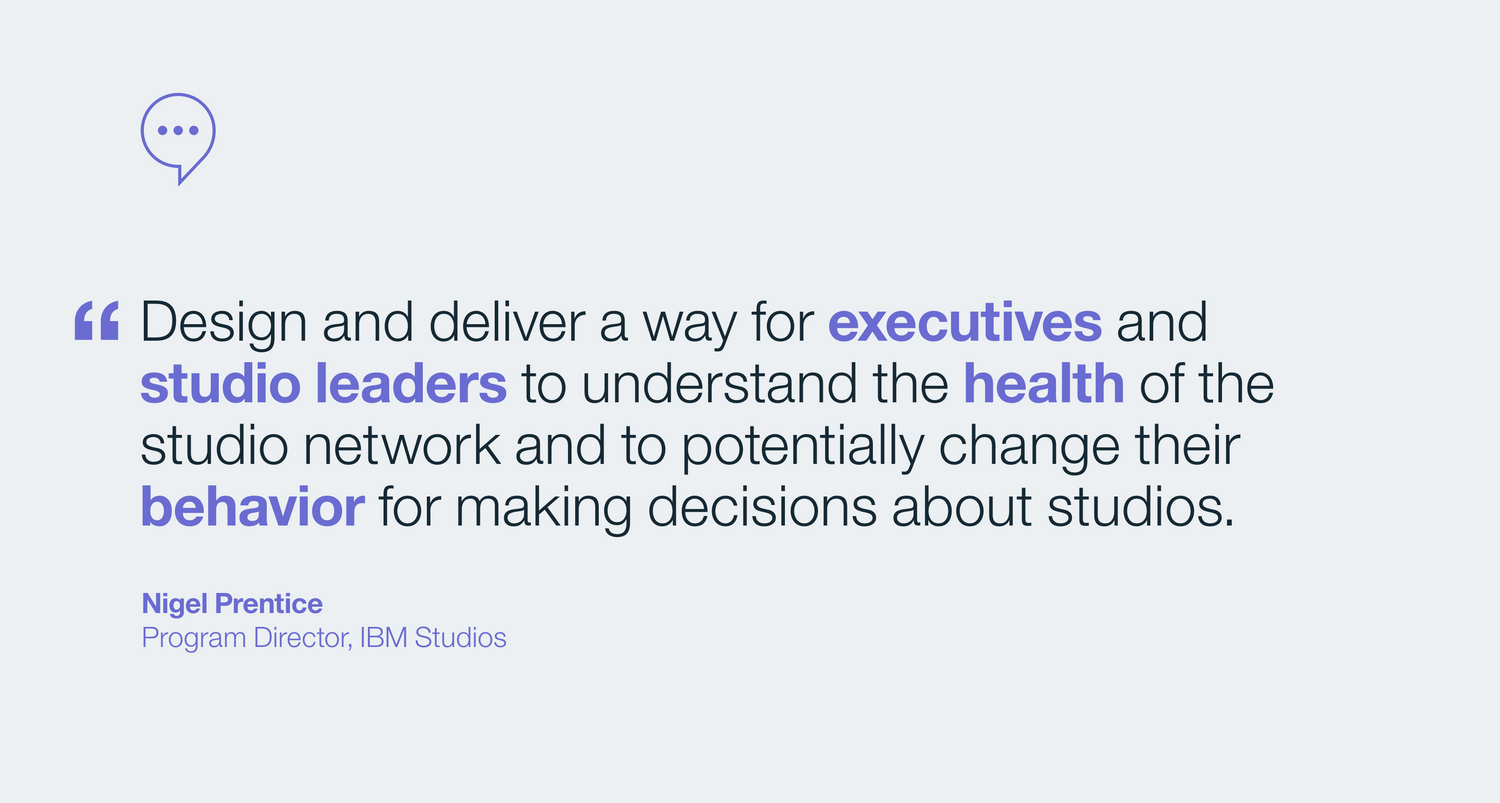Measuring Studio and Culture Impact on Company Revenue
Design studios were a new addition to IBM the past several years. There is currently no way for studio leaders to efficiently and concretely understand studio health, and demonstrate the value of IBM Studios to executives. In short, there is no way to quantitively measure the impact of design on IBM’s revenue.
GOAL
IBMers with a direct stake in the IBM Studios Network can correlate hard data between studio health and business outcomes, to see, share, and predict the impact of IBM Studios for the first time ever.
MY ROLE
UX design, UX research
Design studios were a new addition to IBM the past several years. There is currently no way for studio leaders to efficiently and concretely understand studio health, and demonstrate the value of IBM Studios to executives. In short, there is no way to quantitively measure the impact of design on IBM’s revenue.
GOAL
IBMers with a direct stake in the IBM Studios Network can correlate hard data between studio health and business outcomes, to see, share, and predict the impact of IBM Studios for the first time ever.
MY ROLE
UX design, UX research

RESEARCH PROCESS
My team conducted generative research to understand what the studio structure at various IBM Design studios is like and what Studio Leads believe are the factors that make a healthy studio. We spoke with Studio Leads, Design Directors, and Executives in the US, France, Japan, China, and Australia. Through our research, we identified key insights, metrics, and actionable goals.
My team conducted generative research to understand what the studio structure at various IBM Design studios is like and what Studio Leads believe are the factors that make a healthy studio. We spoke with Studio Leads, Design Directors, and Executives in the US, France, Japan, China, and Australia. Through our research, we identified key insights, metrics, and actionable goals.

Interview debrief
Paper prototype
From the ideation sessions we held based on the insights, we devised a dashboard, known as IBM Mercury, that tracks the health of design studios, globally. IBM Mercury uses an algorithm to track specific metrics and come up with a “grade” for each studio.
IBM MERCURY IS...
A platform for IBM Studios to measure the temperature of the Studios Network.
A tool to track and visualize studio activity.
A window into studios without the need for manual data sharing.
An aggregation of data to show business impact of IBM Studios.
IBM MECURY TRACKS THESE METRICS:
— Designer Engagement (Studio NPS)
— Client Experience (Workshop and Product NPS)
— Business Impact (Workshop and Product Revenue)
— Studio Attrition
— Team Size and Growth Utilization
OUTCOME
With IBM Mercury, IBMers will be able to directly see the impact of how design studios across the world impact the growth of IBM. Furthermore, the validation of key metrics would be an iterative process over time. In other words, the gathering of the right metrics would be something to validate and refine throughout time. The future of IBM Mercury would include systems being built for collecting specific metrics (such as NPS) and expanded functionality to make correlations and predictions with the data.

Prototype of the homepage

Prototype of Portland’s studio page